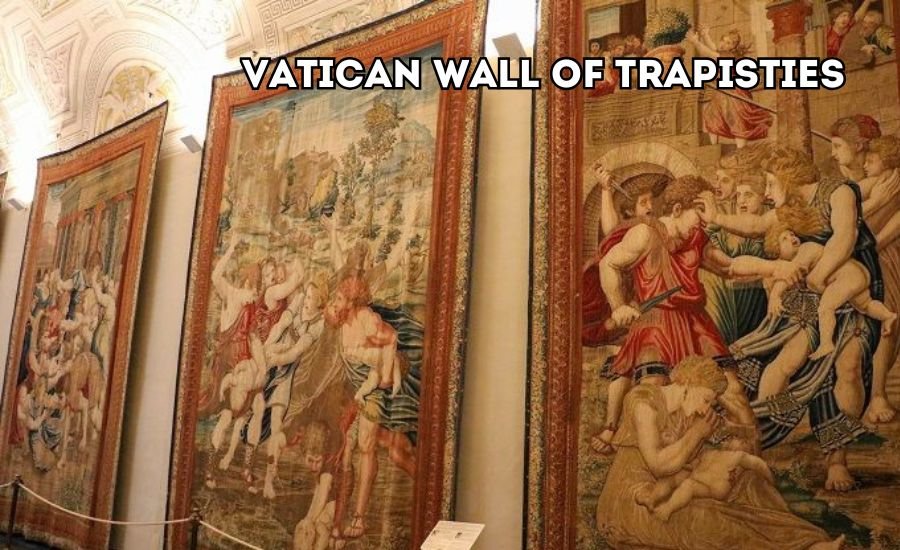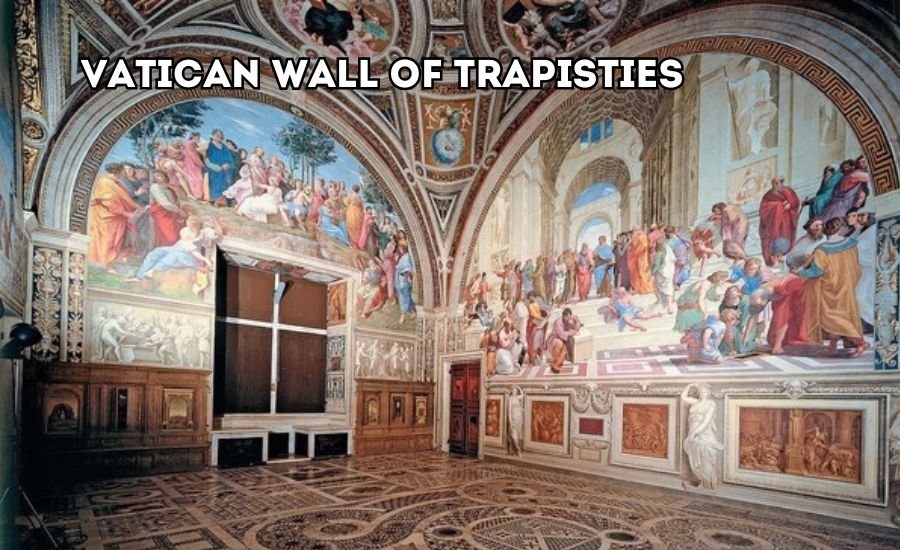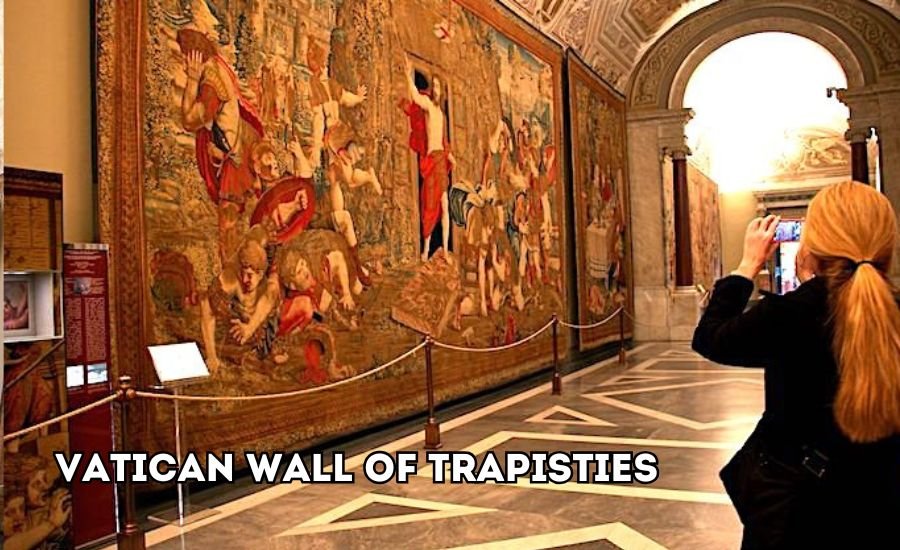The Untold Story of the Vatican Wall of Trapisties

The Vatican Wall of Trapisties stands as one of the least understood yet most intriguing elements of Vatican City’s rich historical tapestry. Most people know Vatican City for its religious significance, stunning art, and awe-inspiring architecture, but few are aware of the mysterious Wall of Trapisties and its deeper historical roots. In this article, we will delve into the origins of this wall, its significance throughout the centuries, and the mysteries that continue to surround it.
The Vatican Wall of Trapisties is not just a physical structure—it is a symbol of protection, faith, and endurance. Over the years, scholars have tried to unravel the true meaning behind its construction, while visitors continue to be mesmerized by its architectural grandeur. Let’s embark on this journey to uncover the fascinating details of this historic monument.
What Exactly is the Vatican Wall of Trapisties?
Before diving into its history, let’s define what the Vatican Wall of Trapisties is. This ancient wall, often hidden in plain sight amidst the grandiosity of Vatican City, served both defensive and symbolic purposes. Built to protect the inner sanctum of the Vatican from external threats, it also became a spiritual fortress, representing the strength of the Catholic faith.
The term “Trapisties” remains somewhat enigmatic. Some historians speculate that it could be a nod to the Trappist monks, a religious order known for their vows of silence and deep contemplation. Others believe that the word refers to a specific section or architectural style of the wall that symbolized quietude and reflection, aligning with the Vatican’s role as a place of peace and sanctuary.
Historical Context: Why Was the Wall Built?

To understand the purpose behind the Vatican Wall, it’s essential to look at the historical and political climate during its construction. The wall was believed to have been erected in the 8th or 9th century, at a time when European cities fortified their perimeters to protect themselves from invaders. Vatican City, home to the papacy, was a prime target for those who sought to disrupt or challenge the authority of the Catholic Church.
The construction of defensive walls around Vatican City was a necessary precaution to safeguard its residents and treasures. Unlike many other European cities, which were primarily concerned with protecting trade routes or civilian populations, Vatican City’s walls protected the religious and spiritual heart of Catholicism.
The Construction of the Vatican Wall of Trapisties
Building such an impressive structure required significant planning and resources. Large stone blocks were quarried from nearby regions and transported to Vatican City for the construction of the wall. Given the scale of the project and the defensive needs of the Vatican, the wall was designed to be tall and thick enough to repel any attempts at breaching its defenses.
The architectural style of the Vatican Wall of Trapisties reflects the engineering capabilities of the medieval period. The wall incorporated defensive features like battlements, arrow slits, and watchtowers, all designed to fortify the city against attackers. These elements allowed guards to defend the city while remaining shielded behind the wall’s protective barrier.
Key Historical Events Involving the Vatican Wall of Trapisties
One of the most famous historical incidents where the Vatican Wall of Trapisties played a vital role was the Sack of Rome in 1527. During this devastating event, Vatican City found itself under siege by the troops of Charles V, Holy Roman Emperor. The city was overrun, but the walls—especially the heavily fortified section of the Trapisties—allowed Pope Clement VII and key members of the papal court to escape to safety within the fortified areas of the Vatican.
This event highlighted the strategic importance of the Vatican Wall of Trapisties in protecting not just the physical structures of the Vatican but also the leadership of the Catholic Church during a time of extreme crisis.
Read More: FINBUSINES
The Symbolism Behind the Vatican Wall of Trapisties
While the Vatican Wall had clear military applications, its symbolic significance is just as important. For centuries, the wall has been seen as a metaphorical representation of the Catholic Church’s strength, faith, and determination to protect its teachings and followers from external influences.
The Trapisties section of the wall, in particular, is thought to represent the silent strength of the Church. This aligns with the values of the Trappist monks, known for their dedication to solitude, prayer, and silence. The wall stands not only as a protector of the Vatican’s treasures but also as a guardian of the spiritual heart of Catholicism.
The Vatican Wall of Trapisties has also come to symbolize the idea of spiritual sanctuary. Just as the walls provided physical protection from invaders, the Church has historically provided spiritual protection to its followers, offering guidance and refuge from the trials of the outside world.
The Architectural Marvel of the Vatican Wall
From an architectural perspective, the Vatican Wall is a masterpiece of medieval engineering. Its towering presence, with stone blocks stacked meticulously to form a seamless barrier, is a testament to the skills of the builders who crafted it. The wall’s sheer height and thickness were designed to deter invaders, while its defensive features—such as turrets, parapets, and arrow loops—gave defenders the ability to fend off attackers.
Over time, parts of the wall have been repaired and restored, preserving its historical significance while ensuring that it remains a prominent feature of Vatican City. Despite these renovations, the wall’s original design remains largely intact, giving visitors a glimpse into the past and the strategic importance of this once-formidable barrier.
Religious Influence on the Wall’s Design
The construction of the Vatican Wall was heavily influenced by religious principles. As the heart of Catholicism, Vatican City needed a structure that would not only protect its people but also reflect its religious authority. The Vatican Wall of Trapisties was designed with this in mind, embodying both the military and spiritual might of the Church.
Religious symbols are often embedded in the architecture of the wall, including crosses and inscriptions that point to the Church’s enduring presence. The wall’s design is a reminder that Vatican City is not just a political entity but also a spiritual one, with a duty to defend its beliefs and teachings.
The Preservation of the Vatican Wall of Trapisties
Preserving such an ancient and significant structure presents unique challenges. Over the centuries, the wall has endured weathering, natural disasters, and the general wear and tear that comes with age. However, the Vatican has made a concerted effort to maintain the integrity of the wall, recognizing its importance not only as a historical monument but also as a symbol of the Church’s enduring strength.
Restoration efforts have focused on repairing damaged sections while ensuring that the original materials and construction methods are respected. Modern-day preservation teams use a combination of traditional techniques and cutting-edge technology to ensure the wall remains standing for future generations.
How Modern-Day Pilgrims View the Vatican Wall
For many visitors, the Vatican Wall of Trapisties represents more than just a historical artifact—it’s a symbol of spiritual strength and reflection. Pilgrims who visit Vatican City often spend time near the wall, contemplating its meaning and the stories it has witnessed over the centuries.
The Trappist monks’ influence on the wall resonates with those who seek solitude and reflection. Much like the monks who devoted their lives to prayer and contemplation, modern-day visitors find the wall to be a place of quiet introspection, far removed from the hustle and bustle of the modern world.
Why the Vatican Wall of Trapisties is Still Relevant Today

The Vatican Wall of Trapisties remains relevant today not only as a historical structure but also as a symbol of the Vatican’s enduring legacy. In an age where many ancient structures have fallen into disrepair, the wall stands tall, reminding the world of Vatican City’s resilience and its role as a bastion of faith.
The wall’s relevance extends beyond its historical significance. It serves as a reminder that the values of protection, faith, and perseverance are timeless. The Vatican Wall of Trapisties continues to inspire both visitors and scholars, offering lessons that remain applicable in today’s world.
Conclusion: A Testament to Endurance and Faith
The Vatican Wall of Trapisties stands as more than just a defensive structure—it is a testament to the strength, endurance, and faith of Vatican City. Over centuries, it has protected the heart of Catholicism from external threats while serving as a symbol of the Church’s resolve to safeguard its teachings and people.
As historians, architects, and religious scholars continue to study the wall, its mysteries slowly unravel, offering new insights into the Vatican’s past. Visitors who walk along its ancient paths are not just admiring a historical monument; they are connecting with the spiritual and cultural legacy of one of the most important religious centers in the world.
In a world where many ancient landmarks have faded into obscurity, the Vatican Wall of Trapisties remains a powerful symbol of the Vatican’s role in history. Its story is far from over, and as new generations continue to visit Vatican City, the wall’s legacy will live on, offering a silent, steadfast reminder of the power of faith and the importance of preservation.
FAQS
Q: What is the Vatican Wall of Trapisties?
A: The Vatican Wall of Trapisties is an ancient defensive wall in Vatican City, designed to protect the religious center from external threats and symbolizing the strength of the Catholic faith.
Q: Why was the Vatican Wall of Trapisties built?
A: The wall was built in the 8th or 9th century to protect Vatican City from invaders and to safeguard the Pope and other key religious figures during times of conflict.
Q: What does the term “Trapisties” refer to?
A: “Trapisties” is believed to be linked to the Trappist monks, representing quiet strength and contemplation, though its exact meaning remains somewhat mysterious.
Q: How was the Vatican Wall of Trapisties used in history?
A: The wall played a crucial role in protecting the Vatican during significant events like the Sack of Rome in 1527, allowing Pope Clement VII to escape to safety.
Q: Is the Vatican Wall of Trapisties still standing today?
A: Yes, the wall still stands today, carefully preserved through restoration efforts, and continues to be a symbol of the Vatican’s historical and spiritual resilience.
Q: Can visitors see the Vatican Wall of Trapisties?
A: Yes, visitors to Vatican City can view the wall, and many find it a place of reflection and spiritual significance.
Q: What makes the Vatican Wall of Trapisties important?
A: The wall is important not only for its historical defense role but also as a symbol of the enduring faith and protection provided by the Catholic Church.
Check Out the Latest Blogs Regarding: Aksano-Corp-Cameras-Wifi-Purchase






